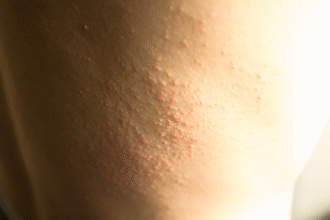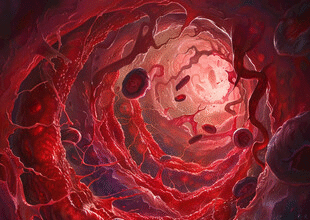Peptic Ulcer Disease: Overview, Pathogenesis, and Management
Peptic ulcer disease (PUD) refers to chronic, recurrent ulcers of the gastric and duodenal mucosa. Ulcers may also arise in the lower esophagus, near gastrojejunal anastomoses, or within Meckel’s diverticulum. PUD develops when aggressive factors—gastric acid, pepsin, and external insults—overwhelm the mucosal defense mechanisms.
Epidemiology
- Lifetime prevalence: 5–10% globally.
- Duodenal ulcers are more common than gastric ulcers.
- Slight male predominance; duodenal ulcer incidence peaks in younger adults, gastric ulcers in older adults.
Etiology and Risk Factors
- Helicobacter pylori infection: Present in ≥70% of duodenal and ~50% of gastric ulcers.
- NSAID use: Chronic nonsteroidal anti-inflammatory drug therapy (e.g., aspirin, ibuprofen) disrupts mucosal prostaglandin synthesis.
- Gastric acid–pepsin: Hypersecretory states driven by increased parietal cell mass and overstimulation via acetylcholine, gastrin, and histamine receptors.
- Lifestyle and dietary factors: Smoking, alcohol, caffeine, and irregular meals exacerbate mucosal injury.
- Psychophysiological stress: Autonomic and endocrine responses (vagal overactivity, cortisol release) increase acid secretion and reduce mucosal perfusion.
- Genetic and rare conditions: Zollinger–Ellison syndrome (gastrinoma), chronic stress ulcers in critically ill patients.
Pathogenesis
- Acid–Pepsin Digestion
Parietal cells in the gastric body secrete hydrochloric acid when stimulated by: - Vagal-mediated acetylcholine.
- Circulating gastrin from antral G cells.
-
Local histamine from mast cells.
Excess acid and pepsin erode the mucosal barrier, causing ulceration. -
H. pylori–Mediated Injury
Bacterial colonization triggers inflammation, increases gastrin release, and weakens the mucosal defense through urease activity and cytotoxin production. -
NSAID-Induced Mucosal Damage
Cyclooxygenase inhibition reduces protective prostaglandins (PGE₂, PGI₂), impairing mucus and bicarbonate secretion and mucosal blood flow. -
Oxidative and Inflammatory Stress
Reactive oxygen species from inflammatory cells further damage epithelial cells and exacerbate ulcer formation. -
Antral Retention and Gastrin Hypersecretion
Gastroparesis or pyloric spasm leads to food stasis, stimulating G cells and driving excess acid output. -
Dietary and Chemical Insults
High-acid, spicy, or rough-textured foods and alcohol directly irritate the mucosa and increase acid secretion.
Clinical Presentation
- Epigastric Pain: Burning or gnawing discomfort, often relieved by antacids or meals (duodenal) or worsened by eating (gastric).
- Dyspepsia: Bloating, early satiety, nausea.
- Complications: Gastrointestinal bleeding (hematemesis, melena), perforation (acute severe pain), and gastric outlet obstruction (vomiting, weight loss).
Diagnosis
- Upper Endoscopy: Gold standard for visualizing ulcers, obtaining biopsies to exclude malignancy, and testing for H. pylori.
- Noninvasive H. pylori Testing: Urea breath test or stool antigen assay for initial screening and post-treatment confirmation.
- Laboratory Tests: CBC (anemia), serum gastrin levels when Zollinger–Ellison is suspected.
- Radiographic Studies: Barium contrast imaging for perforation or obstruction when endoscopy is contraindicated.
Management
1. H. pylori Eradication
- First-Line Triple Therapy (10–14 days):
- Proton pump inhibitor (PPI) + clarithromycin + amoxicillin (or metronidazole).
- Quadruple Therapy:
- PPI + bismuth subsalicylate + tetracycline + metronidazole for resistant cases.
2. Acid Suppression
- Proton Pump Inhibitors: Omeprazole, esomeprazole for rapid ulcer healing.
- H₂-Receptor Antagonists: Ranitidine or famotidine as adjuncts or for mild disease.
3. Mucosal Protection
- Sucralfate: Adheres to ulcer base, protecting it from acid.
- Prostaglandin Analogues: Misoprostol for prevention of NSAID-induced ulcers (contraindicated in pregnancy).
4. Lifestyle Modifications
- Discontinue NSAIDs or co-prescribe PPIs/COX-2 inhibitors if NSAIDs are essential.
- Smoking cessation and moderation of alcohol and caffeine intake.
- Small, frequent meals and avoidance of bedtime eating.
5. Surgical Intervention (Rare)
- Indicated for perforation, refractory bleeding, or obstruction.
- Options include vagotomy with pyloroplasty or ulcer excision with drainage.
Prevention and Patient Education
- Screen and treat H. pylori in high-prevalence populations.
- Use gastroprotective strategies when prescribing NSAIDs.
- Educate patients on medication adherence, recognizing warning signs, and modifying diet and lifestyle.
References
- Malfertheiner P, et al. Management of Helicobacter pylori infection: the Maastricht V/Florence Consensus Report. Gut. 2022.
- Lanza FL, et al. Guidelines for prevention of NSAID-related ulcer complications. Am J Gastroenterol. 2020.
- Sonnenberg A. Epidemiology of peptic ulcer disease: historical perspective. Aliment Pharmacol Ther. 2018.
- Vakil N, et al. The Montreal Definition and Classification of GERD. Am J Gastroenterol. 2006.







